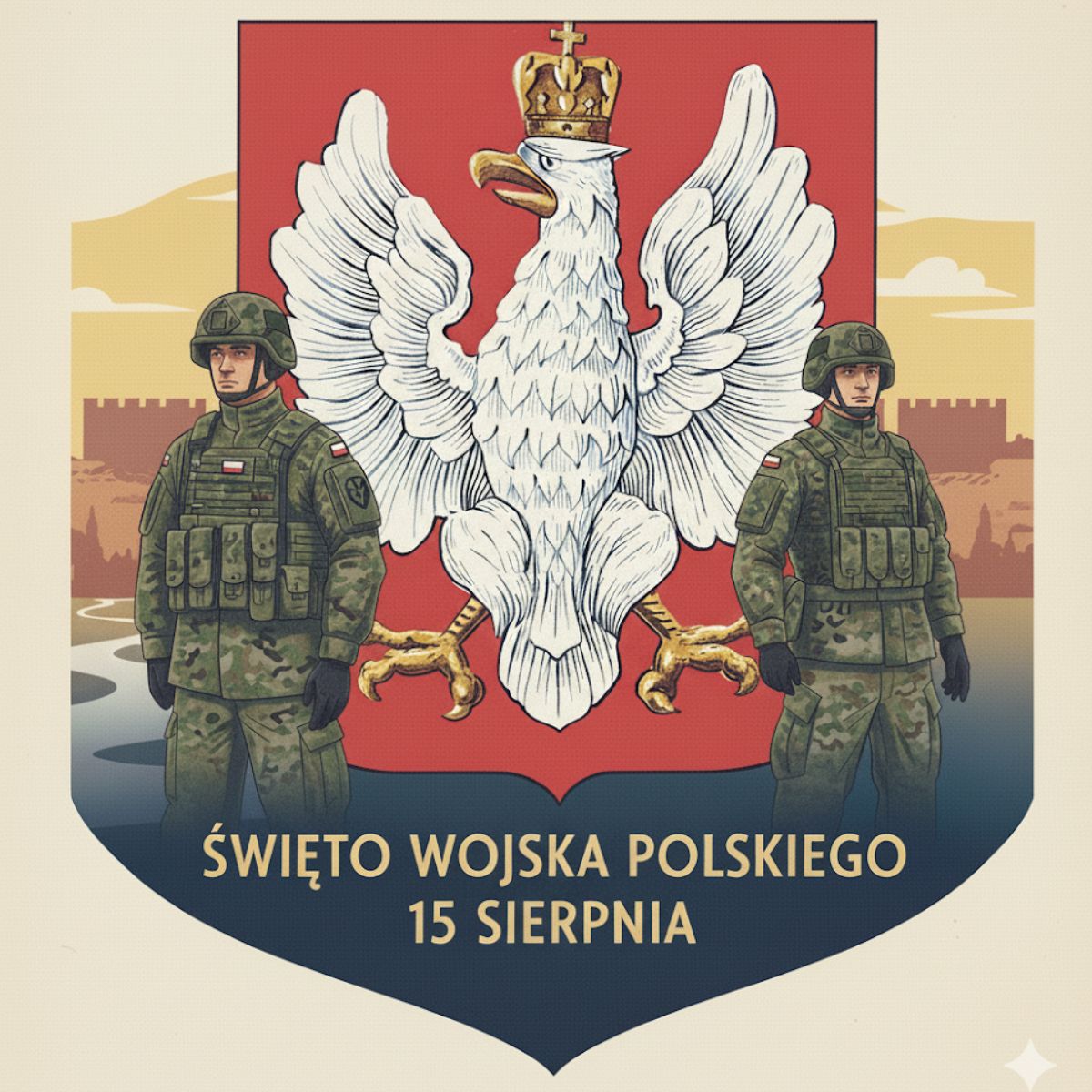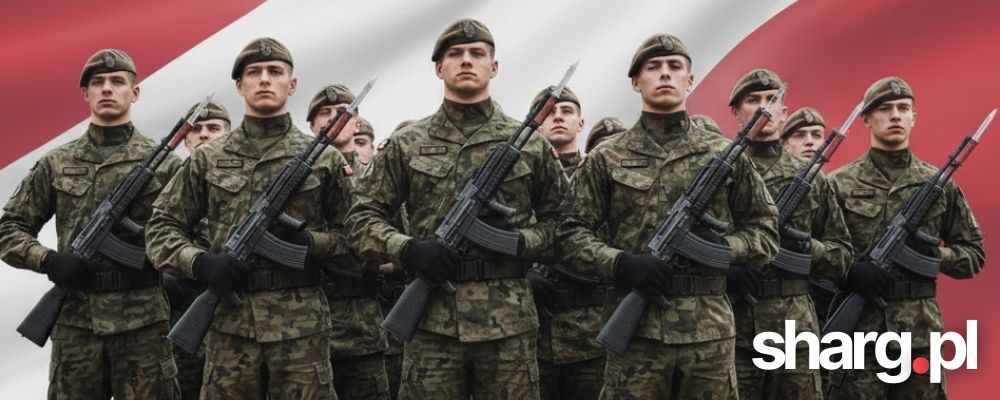
Polish Armed Forces Day Celebrated on August 15
Polish Armed Forces Day is one of Poland’s most important national holidays. It commemorates the victorious Battle of Warsaw of 1920, also known as the “Miracle on the Vistula.” This battle, fought between August 13 and 25, 1920, played a pivotal role in defending Poland’s independence and halting the spread of Bolshevism westward.
Why August 15?
The date of August 15 was chosen deliberately. It was on this day, at the climax of the Battle of Warsaw, that the Polish counteroffensive, led by Marshal Józef Piłsudski, launched from the Wieprz River, decisively repelling the Red Army.
Additionally, August 15 is the Catholic feast of the Assumption of the Blessed Virgin Mary, which gives the celebrations a religious dimension. This convergence of dates imbues Polish Armed Forces Day with both patriotic and spiritual significance.
Establishment of the Holiday and Its Historical Changes
The holiday was officially established by an order from the Minister of Military Affairs, General Stanisław Szeptycki, on August 4, 1923, to commemorate the victory in the Battle of Warsaw. After World War II, during Soviet domination, the celebration date was changed to October 12 to mark the Battle of Lenino, aligning with the state’s narrative. It was not until 1992 that the Polish Parliament restored August 15 as the official date.
Currently, the legal basis for the holiday is the Homeland Defense Act of March 11, 2022 (Journal of Laws 2022, item 655), which replaced earlier regulations.
Battle of Warsaw 1920 – The Decisive Clash
Course of Military Operations
The Battle of Warsaw was one of the most significant engagements of the Polish-Soviet War. Fought from August 13 to 25, 1920, it involved hundreds of thousands of soldiers on both sides. The battle can be divided into three main phases:
- August 13–15: The Red Army attacks Warsaw from the directions of Radzymin and Ossów. Street fighting and determined Polish counterattacks halt the offensive.
- August 16–18: The Polish counteroffensive from the Wieprz River, personally led by Marshal Józef Piłsudski, begins. The maneuver catches the Bolsheviks off guard and breaks their ranks.
- August 19–25: Polish forces push the Red Army eastward, forcing a chaotic retreat. The battle turns into a complete strategic victory.
Key Battle Locations
Although the battle spanned a wide front, several locations were particularly significant:
- Radzymin – The town changed hands multiple times, becoming a symbol of the defenders’ determination.
- Ossów – Where Father Ignacy Skorupka fell, his death becoming a symbol of patriotism and sacrifice.
- Nasielsk and Wyszków – Strategic points where Polish forces prevented the encirclement of the capital.
Forces and Losses
The battle involved approximately 600,000 Red Army soldiers and around 450,000 Polish soldiers. Losses were substantial:
- Poland: Approximately 20,000 killed, 60,000 wounded, and 25,000 missing.
- Red Army: Over 90,000 killed and wounded, about 65,000 taken prisoner, and 45,000 fled to East Prussia, where they were interned.
International Significance
The victory in the Battle of Warsaw not only saved Poland from Bolshevism but also halted the spread of the communist revolution to Western Europe. For this reason, British diplomat and historian Edgar D’Abernon called it one of the eighteen decisive battles in world history.
“The Battle of the Vistula saved Europe from the Bolshevik revolution.” — Edgar Vincent D’Abernon, British Ambassador in Berlin
Celebrations of Polish Armed Forces Day
Central Ceremonies in Warsaw
The main celebrations take place in the capital. Each year, they involve top state officials, military commanders, diplomatic representatives, and thousands of residents and tourists. The military and religious ceremonies create a unique atmosphere of national pride.
Mass at the Polish Army Field Cathedral
Traditionally, the celebrations begin with a Holy Mass at the Polish Army Field Cathedral. The prayers are offered for the homeland and soldiers who died in its defense. Sermons on this day often reference the history of the Battle of Warsaw and contemporary challenges to Poland’s security.
Ceremony at the Tomb of the Unknown Soldier
Another central event is the ceremony at the Tomb of the Unknown Soldier in Piłsudski Square. It includes an honor guard change, ceremonial salutes, and wreath-laying by state officials, veterans, and foreign delegations. This is a moment of national reflection as Poland pays tribute to its fallen heroes.
Grand Military Parade
The most spectacular element of the celebrations is the military parade. Since 2018, it has been held along Warsaw’s Wisłostrada, showcasing hundreds of soldiers from various branches of the armed forces. Spectators can view modern military equipment, including Leopard and Abrams tanks, Rosomak armored personnel carriers, F-16 and FA-50 aircraft, HIMARS rocket launchers, and Patriot air defense systems.
The parade attracts tens of thousands of live spectators and millions via television. It is a unique opportunity for Poles to witness their army’s capabilities and feel pride in its strength.
Awarding Decorations and Promotions
The holiday is also a time to honor soldiers. The President of Poland presents state decorations and military promotions to distinguished officers. These ceremonies highlight the continuity of tradition—from the heroes of 1920 to today’s defenders of the homeland.
Regional Celebrations Across Poland
While central ceremonies are held in Warsaw, Polish Armed Forces Day is celebrated nationwide. Many cities host festivals, military picnics, equipment displays, and patriotic concerts. Military bases open to the public are especially popular, allowing civilians to meet soldiers, view equipment up close, and even try military pea soup.
These events enable citizens to honor the memory of heroes and gain insight into the daily service of the Polish military.
Religious Dimension of August 15 Celebrations
Feast of the Assumption of the Blessed Virgin Mary
The date of August 15 holds dual significance in Poland. In addition to the national Polish Armed Forces Day, the Catholic Church celebrates one of its most important Marian feasts—the Assumption of the Blessed Virgin Mary. This religious observance, rooted in centuries-old tradition, is marked across the country with processions and indulgences that attract worshippers from entire regions.
Symbolic and Spiritual Connection
The coincidence of these two celebrations—national and religious—gives the events a unique character. The Assumption, associated with hope, victory, and the protection of the Virgin Mary, has long been seen as spiritual support for soldiers defending the homeland. The “Miracle on the Vistula” is popularly attributed to Mary’s intercession, further reinforcing the religious symbolism of the 1920 victory.
Masses and Prayers for the Homeland
On August 15, solemn Masses are held across the country for the homeland and the Polish Armed Forces. In Warsaw, the Polish Army Field Cathedral is the focal point, but thousands also gather at Marian sanctuaries, such as Jasna Góra in Częstochowa, to pray for soldiers and Poland. Sermons often blend patriotic and religious messages.
Presence of Clergy in State Ceremonies
The religious element is also prominent in state ceremonies. During the events at the Tomb of the Unknown Soldier, military chaplains lead prayers, and clergy from various denominations participate in parades, emphasizing the holiday’s universal nature. The Church plays both a spiritual and symbolic role, underscoring the moral values that guide the Polish military.
Pilgrimage Traditions
Many Poles associate August 15 with pilgrimage traditions—to Marian sanctuaries and national memorial sites. Pilgrims bring flowers and wreaths, laying them not only at altars but also at monuments and plaques honoring soldiers who died for freedom. This unique blend of piety and patriotism is a hallmark of the day.
Significance of Polish Armed Forces Day Today
Tribute to the Past
Polish Armed Forces Day is primarily a day to honor soldiers who gave their lives for the homeland. It commemorates the heroes of the Battle of Warsaw of 1920 and all those who fought in subsequent wars and conflicts, from World War II to modern international missions. The celebrations highlight the continuity of tradition and the legacy of generations that shaped Poland’s independence.
Respect for Contemporary Soldiers
Today’s celebrations provide an opportunity to express appreciation for soldiers serving in Poland and abroad. The Polish Armed Forces participate in NATO, UN, and EU missions, support allied operations, and engage in peacekeeping and stabilization efforts. August 15 is a moment for society to thank them for their professionalism, courage, and dedication.
Building National Identity
The holiday plays a vital role in fostering patriotism and a sense of national community. Ceremonies, parades, and festivals attract both adults and children, serving as a living history lesson. They help younger generations understand the military’s role and the importance of service to the homeland.
Bridging the Military and Society
One of the main goals of the celebrations is to strengthen ties between the military and civilians. Military picnics, open barracks days, and equipment displays bring the army closer to the people. Soldiers interact with residents, answer questions, and share insights into their daily service, building trust and a shared sense of security.
A Modern Army in the 21st Century
The August 15 celebrations also showcase the capabilities of a modern army. Poland is investing in new armaments, including FA-50 aircraft, Abrams tanks, HIMARS rocket systems, and Patriot air defense systems. Military parades allow the public to see the results of these investments and recognize Poland’s growing defensive capabilities.
Symbol of National Unity
Polish Armed Forces Day is a time when Poles unite beyond political divides around values like freedom, sovereignty, and security. It symbolizes a nation that, as in 1920, stood together to defend the state. Thus, August 15 is not only a military holiday but also a celebration of national unity and pride.
FAQ – Frequently Asked Questions About Polish Armed Forces Day
When is Polish Armed Forces Day celebrated?
It is observed annually on August 15, commemorating the victorious Battle of Warsaw of 1920.
Why was August 15 chosen?
It marks the start of the Polish counteroffensive from the Wieprz River, which decided the outcome of the Polish-Soviet War. It also coincides with the feast of the Assumption of the Blessed Virgin Mary.
What are the main celebrations in Warsaw?
Central events include a Holy Mass at the Polish Army Field Cathedral, a ceremony at the Tomb of the Unknown Soldier, and a grand military parade featuring modern equipment.
Are celebrations held outside the capital?
Yes. Cities across Poland host festivals, military equipment displays, concerts, and historical reenactments. Military bases open their doors to the public.
What is the significance of the holiday for today’s military?
It is an opportunity to showcase modern armaments, award decorations and promotions, and strengthen bonds between soldiers and society.
Does Polish Armed Forces Day have a religious dimension?
Yes. The feast of the Assumption of the Blessed Virgin Mary on the same day adds a spiritual and symbolic dimension, with Masses and processions held nationwide.
Summary
Polish Armed Forces Day is a unique day that blends history, tradition, and modernity. It commemorates the victory in the Battle of Warsaw of 1920, honors fallen heroes, and expresses respect for contemporary soldiers. It symbolizes national unity, pride, and readiness to defend independence.
The August 15 celebrations—filled with ceremonies, parades, and religious observances—remind us that the Polish Armed Forces have been a cornerstone of the nation’s security and independence for centuries. They also provide an opportunity to showcase the modern army, its strength, professionalism, and significance in the 21st-century world.

